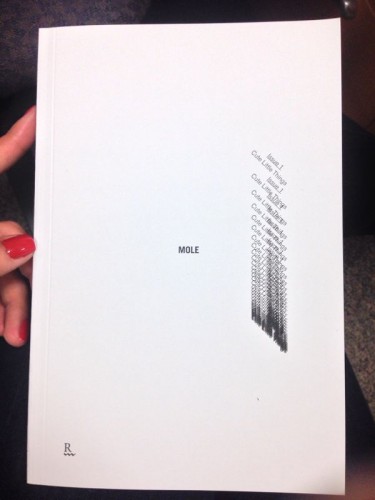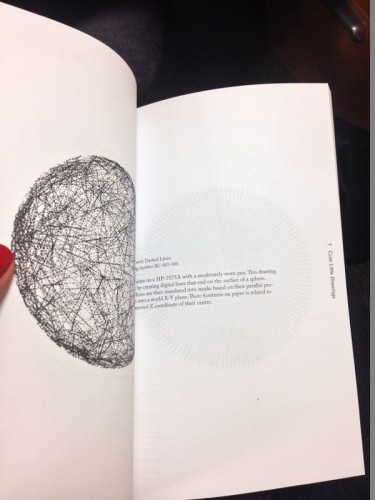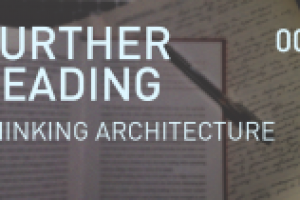Moles are subterranean animals that can be disgusting and don’t often seem to fit in, and it is this which is made manifest in Mole Magazine, an annual student publication, launching in three days, that aspires to talk about design sensibilities through a new, different lens. That is, Mole indulges in the banal, the visceral, and the repetitive to evoke the contemporary sensibilities in design. From their website, “Mole…intends to become a parasite of the mainstream: to feed off its energies and to tackle it from new angles.”
[Iggy So] We want to talk about designers themselves and how they feel, their emotions – things like anger, cuteness, happiness. It is the emotions of the designers, not of the spaces they create, and therein we prioritize intellectual problems over spatial ones.What is Mole?
[Iggy So] Run by students, Mole uses an oblique way of conducting research without being blatant about it, without writing a thesis. We are writing about something that is explicitly visual. I always have this obsession about talking about something more than design, more than just school. We don’t have a specific topic in mind that is in sync with architecture, for example, we are never going to have an issue on construction or parametrics. If you talk about a particular subject that people already know about, they will get bored. So we want to present a different perspective, but something that people are already thinking about.How was Mole conceptualized?
[Iggy So] Our initial motivation was quite crass. We were jealous of other schools having publications of their own. Also, we wanted to have fun and make pretty things. With such shallow ambitions came shallow goals, especially in terms of aesthetics, an attitude which is directly translated into our graphic design. The banality and repetitive elements are made explicit while our themes tend to be more playful yet still connected to the larger architectural discourse. Our first meeting consisted of bringing books that we liked, what we thought made things look pretty. Initially, we imagined that a student publication instigated publishing student work. But through talking to some of the faculty advisors, John McMinn, Lola Sheppard, Maya Przybylski, came the idea that this shouldn’t be about recycling material. And that’s when it hit us that no one was going to read this and that we would have to generate our own content. It was at this point that Mole became a long term commitment.
What is the editorial direction of Mole?
[Iggy So] It’s the stuff that you would muse about. It’s meant to be fun, but it’s also pretty serious. Architecture is very, very slow; it takes a long time to make a building. Mole is a venue for gossiping about architecture, precisely when architecture begins to become tedious. For example, happiness is a weird optimism that people tend to have in design schools. Is there anything useful in going around studio and telling someone that their project is great? It’s not adding to any general knowledge. Within such mundane discourse we are now trying to extract something more useful. It is the simple idea that you can repeat the clichés, the sweet nothings that people constantly say, and turn it into something special. We wanted to take this fundamental theme and make it sublime, make it special. This is an intellectual project that is not just about generating content but a vision for a new way of talking, a new way of gossiping, a new way of having fun with architecture.How is this reflected in your upcoming publication, Cute Little Things?
[Iggy So] The point with Cute Little Things is that we wanted to talk about little things. Things are constantly getting smaller and smaller but at the same time the networks, logistics, and geography are becoming increasingly complex. There is a growing gap between extreme compaction and extreme diversification. Cute Little Things aims to fill the gap between the two by introducing a wild card to it, a catalyst, and that is human emotion. In this issue we decided to use cuteness. Everything that is small is usually cute – maybe except for bugs. Think about Apple products or pencil cases; people intentionally put a lot of detail into making something little and cute. And what that means is exactly what we are exploring in this inaugural issue.What is the purpose of having an external panel?
[Iggy So] A new publication in itself does not have very much authority, and a student publication has even less. We wanted to have some kind of expertise, have people in the field, so that we could be considered seriously. Thus, there are a range of people we try and bring on from young and emerging designers to those who have a broader history. For this issue, our panel consisted of Daniel D’oca of Interboro Partners, John Hong and Jinhee Park of SsD Architecture, Aileen Kwun of Project Projects, Brigitte Shim of Shim-Sutcliffe Architects, Mason White of Lateral Office, and George Baird of Baird Sampson Neuert ArchitectsWhat were some of the challenges you faced in starting Mole?
[Iggy So] There is a challenge at every step. I think the easiest thing was starting it, to say that you want to do it; you have all of these great ideas and you don’t understand the related consequences. But after that, even having meetings in itself was hard and then summer came, and we left school. As always, everything is by chance. I happened to be working in New York City and would go to as many book launches and lectures as I could to recruit jury members. That was tough, as was scheduling and figuring out expenses and funding. Funding came primarily from the Arriscraft lecture series, and this is reflective of the identity of Mole. We want to play on the idea of a parasitic relationship – that we stick on to other entities and piggy-back on their opportunities.What was the School’s reaction to Mole?
[Iggy So] There was a lot of concern about the degree of relationship between the magazine and the school. We are constantly being asked why a student-run publication doesn’t feature student work. Our idea is that Mole is a venue for research, so it promotes school identity through a tangential affiliation; the idea that we are mirroring what the school is doing is very important. We want to orient our editorial direction and scheduling based on what is happening at the school, and this inherently links Mole to the School.Mole Magazine’s inaugural issue will be launching on October 17th, and will be available for sale at the school and on Amazon.
For a glimpse inside the issue, see Mole Magazine Teaser #1 featuring the work of Lukas Franciszkiewicz and Mole Magazine Teaser #2 featuring the work of Design With Company (DWC)




![[SWAG] September Meeting Minutes](http://waterlooarchitecture.com/bridge/wp-content/uploads/2013/06/swag_logo-e1410273844246-300x200.jpg)
